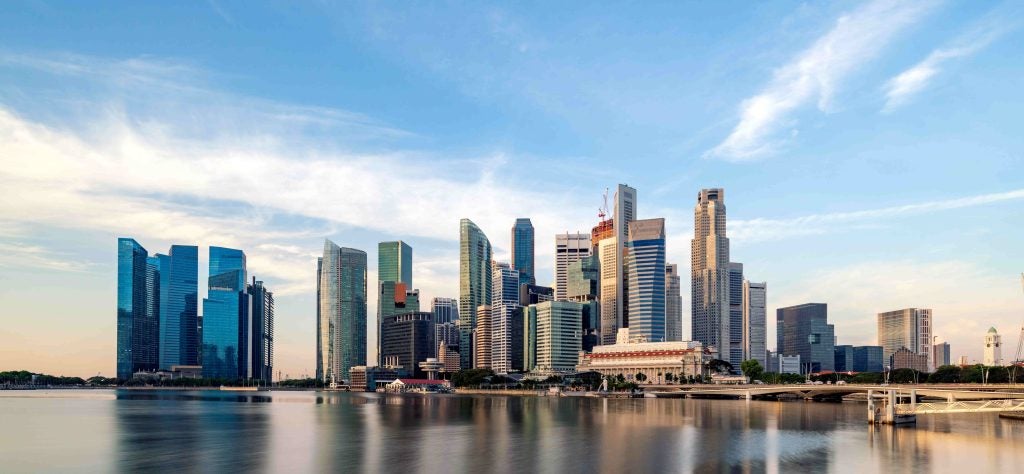Recent fund activity and a willingness to incorporate
themes into their investment processes,
suggest that a growing number of fund managers are buying into the
concept of thematic investment. Paul Golden reports.
 Thematic
Thematic
investing is about identifying global economic trends driven by a
combination of politics, culture and/or demographics.
For example, a joint report published in June by the
Institutional Investors Group on Climate Change, the North American
Investor Network on Climate Risk and Australia/New Zealand Investor
Group on Climate Change, in addition to a survey of asset managers
and owners with collective assets in excess of $12trn, suggested
that more than half invested in funds focused on climate
change.
The report found that a further 15%
of asset managers and 45% of asset owners were considering an
allocation to thematic investments over the next few years.
These findings are in line with
research from Cerulli Associates, which reports that ‘old style’
themes such as climate change and a shortage of natural resources
are still resonating with investors.
How well do you really know your competitors?
Access the most comprehensive Company Profiles on the market, powered by GlobalData. Save hours of research. Gain competitive edge.

Thank you!
Your download email will arrive shortly
Not ready to buy yet? Download a free sample
We are confident about the unique quality of our Company Profiles. However, we want you to make the most beneficial decision for your business, so we offer a free sample that you can download by submitting the below form
By GlobalData
Product trends
In terms of products, Cerulli
Associates identifies multi-asset as one of the strongest product
trends in 2011, and, looking to next year, the firm expects
agriculture and infrastructure to be strong themes on the back of
growing demand from Asian institutional investors for exposure to
the latter theme in particular.
According to Barbara Wall, global
and European research editor at Cerulli Associates, more managers
are incorporating themes as an overlay or backdrop to the
investment process.
Wall says: “Funds may not be
marketed as thematic, but managers are expanding their research
capabilities in this area.”
An interesting development is the
emergence of volatility as an asset class.
Wall notes: “Managers are focusing
on volatility and the ageing population and looking to manage these
themes from the twin perspectives of longevity and risk management.
Specifically, they are advocating a higher use of derivatives and
looking for non-correlated substitutes for fixed income.”
Growing
acceptance
 Thematic
Thematic
investing has always existed, but fund managers are increasingly
using the term to attract the attention of new investors as a means
of differentiating themselves.
That is the view of Gregory Perdon, chief investment officer at
Arbuthnot Latham, who adds that thematic investing is gaining
acceptance among clients as they seek alternative ways to generate
alpha.
Perdon comments: “The main
challenges one faces when attempting to invest thematically are
idea generation, concentration risk and timing of execution.
Great ideas are hard to come by and
even when one identifies an attractive theme, one needs to be
conscious of the timing of trade along with the risk that it
represents too large a percentage of the portfolio.”
Liquidity
constraints
Challenges involved in
incorporating thematic investment into an existing fund management
strategy include liquidity constraints.
“Very often a structure will offer
quarterly liquidity as opposed to daily.
We believe investors’ current
obsession with short-term liquidity can deprive them of exposure to
other equally high-quality investment opportunities.
These other opportunities tend to
immediately fall off the radar screens of investors due to the lack
of immediate liquidity,” notes Perdon.
News drives thematic
investment
According to Steven Falci, head of
strategy development and sustainable investment at Kleinwort Benson
Investors, many of the trends driving thematic investment are news
headlines, such as the world’s population crossing 7bn.
Meanwhile, the spike in food prices
during the 2010 Russian drought, which destroyed one third of that
country’s wheat crop, reminded people of the long-term challenge of
meeting global demand for food.
He says his firm has identified
three key thematic investment areas – water, renewable energy and
agribusiness – and is very precise in terms of designing these
funds so that investors are getting exposure to the drivers of the
theme.
Falci says: “We closely define each
theme. For example, a water company has to offer a process, service
or technology across the water cycle that is designed to combat
scarcity and we are focusing on pure plays, companies that derive
more than half their revenues from this activity.”
Advantages of thematic
investment
In Falci’s view, there are
advantages to managing thematic investment portfolios on an
individual basis.
“Some people see this as a liquid
way of getting exposure to infrastructure, for example. Water is
expected to receive more investment in infrastructure than any
other sector in the next few years.”
Population growth and natural
resource scarcity are core drivers of many thematic investment
funds, but when Pictet launched the Pictet-Premium Brands fund in
2006, it defined the fund’s investment objective as investing in
companies that provide consumer products and services ‘of superior
quality’.
Guillaume Chagnard, product manager
for theme and sustainable and responsible investing equities at
Pictet Asset Management, agrees that private and wholesale
investors embraced the idea of thematic investing some time
ago.
Chagnard says: “They have
understood the advantages of using themes as an intelligent
diversifier to their portfolio and a way to execute focused
investments with high-conviction ideas.
We have seen that institutional
investors have started to [rediscover] the advantages of theme
investing, if they are willing and able to leave the tight
constraints of a traditional asset allocation.”

Precision
needed
He also agrees that in order to be
successful you need to precisely define the investment theme.
Chagnard explains: “You must be
able to identify a common denominator for a set of companies in a
market area that is bound to grow faster than the overall
market.
By way of illustration, when we
define a premium brand we consider criteria such as pricing power,
loyalty of consumers, aspirational image, product differentiation
and some level of integration [within] the business.”
A second key element is to quantify
the percentage of the enterprise value that relates to a specific
theme.
The calculation of the degree of
purity of a company to a specific theme requires a detailed
knowledge of its activities and its financial statements.
Thematic investing also requires
fund managers to define an investment universe from scratch since
there will be no benchmark that fully reflect its views on the
themes it offers to its investors.
Emerging markets
dominate
With inflation-busting products in
demand, fund managers have responded by developing products in the
‘linkers’ space on a global basis. Wall expects further
developments in the emerging markets inflation-linked space and
says emerging markets will continue to dominate thematic
thinking.
Wall explains: “There has been a
lot of talk about emerging markets debt, now it is more about
currencies as investments. Investors want currency with
appreciating potential and some currency carry trade. In terms of
asset classes, there will be a keen focus on RMB products.”
Inevitably, information is king
when it comes to successful thematic investment.
Because few themes are constrained
to a single industry or geographical region, traditional research
will often uncover only part of a major trend, explains Mark
Hoskin, managing partner at financial planners Holden &
Partners.
By identifying and understanding
relationships across sectors and regions, thematic research can
therefore give investors the edge over their contemporaries.
Knowledge is
power
Finding quality information on
themes that offer growth potential is the challenge, says
Chagnard.
Chagnard comments: “You have to do
the maths properly, since the information is not just lying around.
G
rowth can be found in many places –
the goal is to find the companies that will be winners in the
future, and these can be large, mid or small caps.
Obviously, it is more difficult to
find quality information on small and micro caps because they are
usually less well covered by sell-side analysts.”
According to Kleinwort Benson
Investors, the macro data is only a starting point.
“We believe this is a specialist
discipline, which requires portfolio managers to be completely
focused on these themes in order to get to the micro data,” says
Falci.
Contrasting
opinions
Despite general agreement that
thematic investment will become more prevalent, views on the
prospects of specific themes are less uniform.
For example, Perdon says that while
water is a popular theme, right now he does not see a lot of value
in it as an investment, whereas Falci describes water as “still
probably a little under-recognised” while accepting that utilities,
water technology and water infrastructure companies offer very
different return patterns.
Chagnard acknowledges that, while
water is one of the most popular themes among fund managers as
defined by the number of competitors one of Pictet’s thematic funds
has, this does not necessarily imply that this, or any other theme,
has recently experienced the biggest interest from investors.
Looking ahead, Falci refers to a
longer-term perspective combined with some near-term certainty on
the economic climate as factors that would encourage greater use of
thematic investment strategies.
Don’t follow the
herd
Investors who do not want to be
limited by investment constraints are another potential growth
engine, adds Chagnard.
“Investors who believe in the
long-term potential of an investment theme should be looking at
thematic investment strategies as a viable alternative to
benchmark-oriented strategies. It has rarely been a good idea to
follow the herd.”
Perdon concludes with a note of
caution, warning that the extent to which thematic investment
strategies are deployed will often depend on the personality of the
underlying client.
“Recently, I have noticed that many
investors are actively seeking ‘different’ investment exposures,
which would include theme-based ideas,” he says.
“But the tide could easily turn.”







